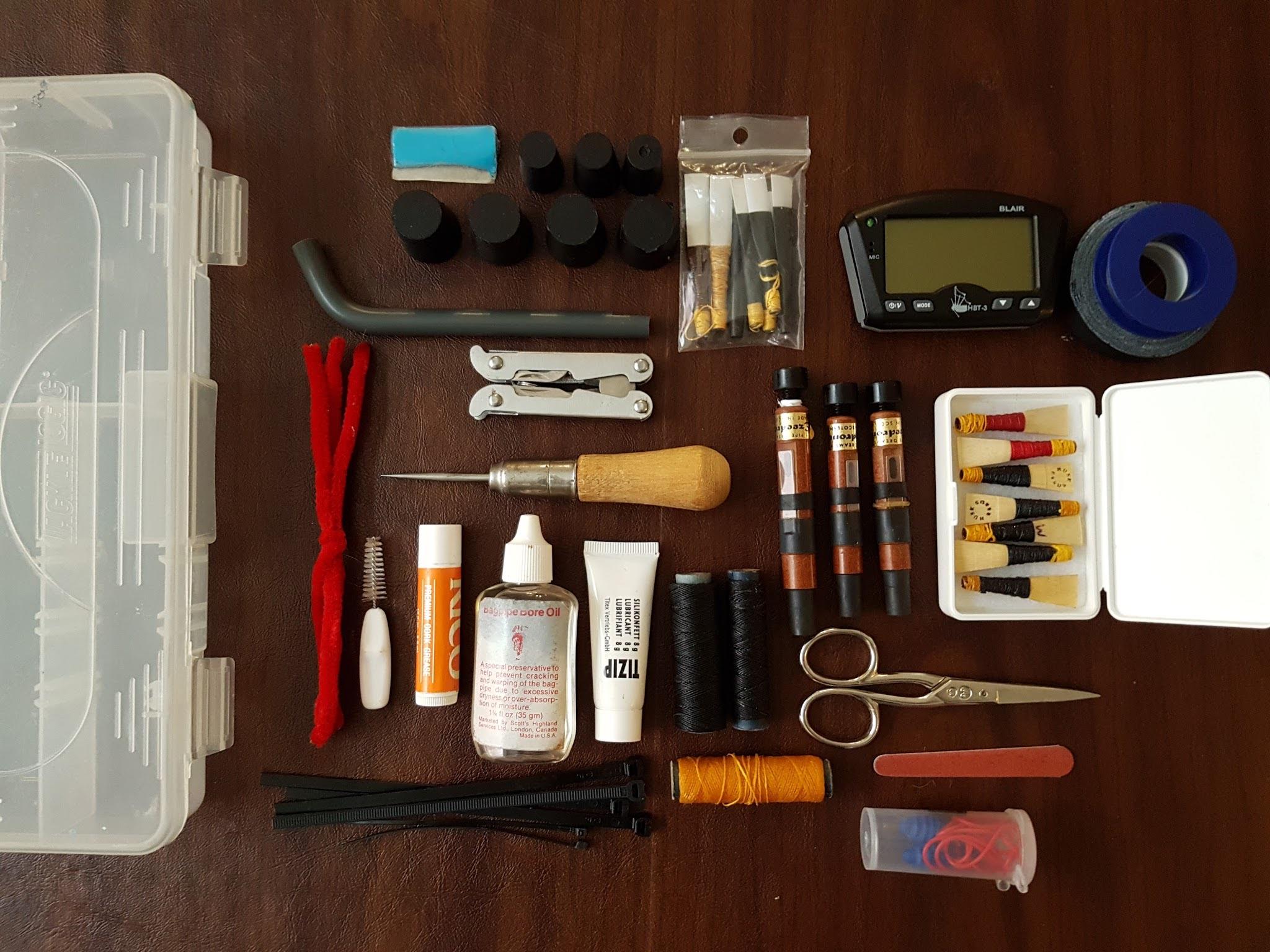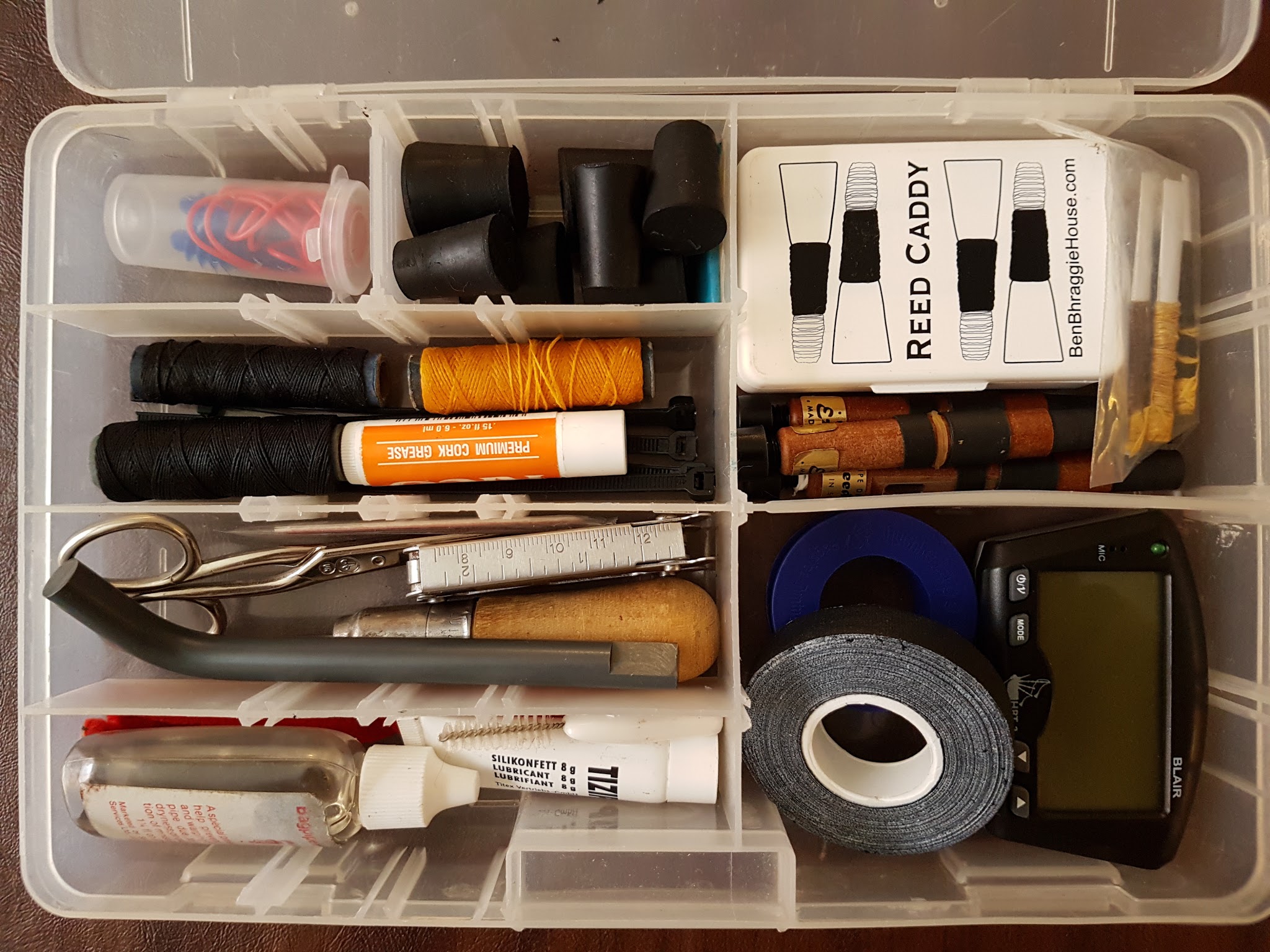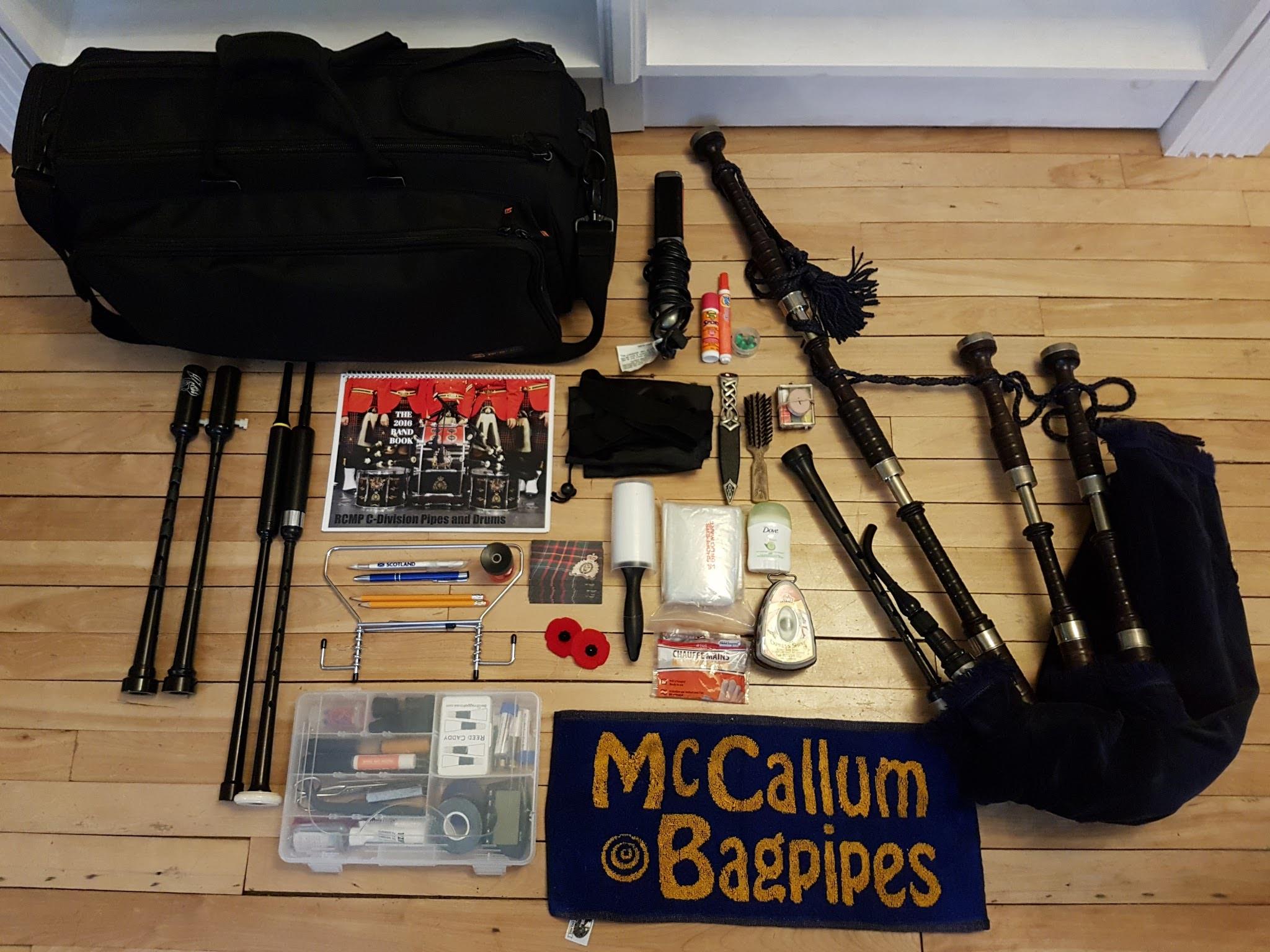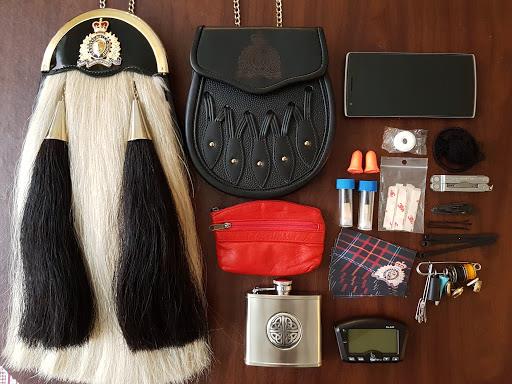Why is Hemp Yellow? ...And Not Made of Hemp :S
Wednesday, November 1, 2017 by Madeleine King | Bagpipes
There are many different opinions when it comes to how to best and correctly hemp your bagpipes. But haven't you ever wondered, like I have... "why yellow? Or for that matter, why black?" Really good question! Before we tackle that, let's look quickly at what hemp *is*, what it *isn't*, and what it's for!
How to Use the Different Types of Hemp
Loosely speaking, hemp is a type of thick thread used for cushioning and sealing joints on your bagpipe. There are three types that people generally keep in their maintenance kit:
- yellow, unwaxed,
- yellow, waxed, and
- black, waxed
Generally, the black, waxed hemp is thicker and stickier - most people use this anywhere on your bagpipe where the joint must remain sealed and immovable. For example, you would use this on the part of your drone that goes into the stock (this is a non-moving joint). You also would use black hemp on joints that tend to get wetter than the others - if you have a good moisture control system, really only your blowstick should be at issue here. Thicker, more well-coated hemp will suffer less rot than thinner stuff.
The yellow waxed hemp is usually used on joints that need to be airtight, but at the same time need to move. This is mostly your tuning pins, but many people also hemp their chanter tenon with yellow waxed hemp as well. The reason for this is twofold: 1) the wax on the yellow hemp is less sticky, offering much less resistance for these movable parts, and 2) the hemp itself is thinner, allowing you to add or remove *just* a little bit more humid days, or add the tiniest amount in the driest part of February (this tends to be more critical for movable parts, because with the parts that don't move you can feel free to load them up with hemp and not worry about them again - with the movable parts, you need to have just the right amount of hemp, always).
Unwaxed yellow hemp is used sometimes on practice chanters and on chanter reeds. Mostly, however, it is used by do-it-yourselfers who like to use shoemakers wax and paraffin wax to coat the different sections. By far, this is the absolute best way for the chanter tenon. The reason being: you can coat the first layer of hemp in black shoemakers wax so that it sticks very well to the tenon itself. Then mid-way through the wrap, you can use paraffin wax to make the chanter easy to remove from the chanter stock. This prevents the chanter from "spinning" inside the hemp because the inner layer does not adhere to the tenon. Shoemakers wax is far stickier than the paraffin wax that is used on modern-day black hemp.
Unwaxed yellow hemp is pretty terrible on its own anywhere on your pipes, as it tends to absorb a lot of moisture, which causes swelling in addition to rot.
Why "Hemp"?
Contrary to what you might think, the "hemp" we use today isn't actually hemp at all - it's linen. We call what we use "hemp" because at one time, actual hemp was considered the best material to use in order to avoid rot.
In 16th century Britain, sailing vessels used oiled hemp fibers for rigging and even for sails, as it was most resistant to damage by water. Like ship-makers, pipe-makers required water-resistant materials in order to make their bagpipes last; it is likely that they were inspired by the ship building industry because of this similar need. During that time, Henry the VIII encouraged farmers to plant hemp to keep up with the steady demand for this material on ships up until the 17th century, when it was discovered that hemp grew much more easily in colonial America. Mass production of hemp fibers thus was largely moved overseas. [1]
In the early 1920s, a campaign against the use and cultivation of hemp was launched in America. The automotive industry had discovered biomass conversion and had begun producing hemp fuel - which angered competing industries and caused them to lobby against hemp, associating it with marijuana. [2] By 1937, the tax and licensing requirements for the production of hemp made it unattractive as a crop for farmers, who abandoned it altogether. [3]
This collapse in the market is likely what caused pipe-makers to search for new materials. But the reason we call it "hemp" is because in the beginning, it *was* hemp. Right up until the beginning of the 20th century.
Help from the Shoemakers
Now pipe-makers had to find a new type of threading material that was as resistant to rot as hemp, but also readily available and not too expensive. Fortunately for them, the ship-building industry wasn't the only one prioritizing water-resistant materials. In soggy, wet Britain, shoemakers cared about this A LOT. The thread used for sewing shoes together had to be sturdy, weather-resistant, and also smooth enough for sewing through leather. This was a natural match for pipe-makers.
Linen, made from the flax seed, has many of the same water-resistant qualities as hemp. In fact, when produced using similar techniques, linen and hemp are so similar that one would need a high-powered microscope in order to tell the two types of fibers apart. [4] In addition to that, shoemakers have a long history of using a coating on their linen threads to further improve water resistance (and facilitate sewing). This coating, referred to as shoemaker's wax, (incorrectly, cobbler's wax), "coad" or handwax, was initially just beeswax, and came into use in the middle-ages when shoemakers switched from thonging (made of gut) to actual thread. At some point, resin was added to help the threads stay in place, and then somewhere between 1200-1400 adding pitch instead of resin became the standard, while the earlier beeswax/resin blend was now used exclusively for lighter-coloured work. [5]
Essentially, by the time pipe-makers came along looking for new materials, shoemakers had perfected the techniques and were already using two types of wax coatings - a heavy black sole-thread with stickier pitch in it, and an amber-coloured, waxier thread for lighter work. Sound familiar? It should!
The "Hemp" of Today
Shoemakers hemp would have been naturally black (from pitch) and yellow (from beeswax and resin). But today, our linen "hemp" is mass produced by the textile industry and is all coated with paraffin wax. Paraffin wax is a translucent white colour, and so there is absolutely no reason that it has to be black or yellow except to follow tradition.
Though we still use linen thread, certainly synthetic materials could be used, which would resist rotting and can come in any colour you might like.
Traditionalists also like to buy unwaxed linen thread and wax it themselves using shoemaker's wax, and some people are even experimenting with original hemp thread and coating it with beeswax. Shoemaker's wax is still available through many companies, for example "Thermo Wax", which is British-made by F. Ball & Co., Ltd.
Currently, I'm experimenting with my blowpipe as I tend to go through quite a bit of black hemp on it. About three weeks ago, I replaced my rotten black hemp with waxed polyester upholstery button thread. It's thicker still than black waxed, so you have to get the wrapping just right. I'll keep you all posted as to how well it stands up!
What's In your Instrument Maintenance Kit?
Wednesday, October 18, 2017 by Madeleine King | Bagpipes
|
Ask this question to any piper and you'll be amazed at the different answers you'll get! It's neat to see how different people plan for a variety of situations, but if you're brand new to piping, it can be confusing to know where to start. Fortunately, there are a few common things that most pipers agree are essential tools, and these all boil down to the most common problems that can crop up while you're out and about with your instrument. Here's a list of the kinds of maintenance and problem-solving you will probably have to do on a regular basis: Joints and Seals
Problem: Joints can become loose, causing your pipes to leak air or come apart during handling.
Problem: I added more hemp to my tuning pin tenons and now they're really stiff.
Problem: Blowpipe flapper valve breaks.
Problem: Air is escaping from the pipe bag zipper (obviously this only applies if you have a bag with a zipper).
Reeds
Problem: Your chanter reed becomes too soft, or too hard.
Problem: A drone reed finally bites the dust.
Cleaning and Care
Problem: Your pipes get soaked in an outdoor parade.
Problem: Your drone cords pop undone.
Problem: You had to remove tape from your chanter, and now it's covered in sticky gunk.
Problem: I removed gunk from my chanter, but some of it got lodged in the holes.
Pitch
Problem: Your chanter is nearly in tune, but one or two notes are sharp.
Problem: You think your chanter is flat/sharp but you're not sure.
Other Stuff - I like to have a complete set of large and small corks; this means that I can kill all my drones, or some of them, during a practice for whatever reason. The large corks can be used in place of the chanter, or can be used to store a practice chanter in pieces. Because I teach, I also bring golf tees with me everywhere. You can advance faster by having lots of opportunities to blow drones and practice striking in and cutting off, even if you don't know the tunes. - I also store things that relate to my particular equipment. I use a hose for moisture control that is designed to be installed through the blowpipe with a special screwdriver. So I bring that screwdriver. If your drone reeds use allan keys, bring those. - I wear a horsehair sporran with some of my uniforms. So I also bring a hairbrush and a small hair straightener. Neigh! - Some toiletries are nice to have. I pack deodorant for those hardworking parades and practices. I also put in some sunscreen so I can avoid glen-burn. In the colder seasons, I throw in some Hot-paws hand warmers. Lint brushes and shoe-polish pads are great. Spare buttons for jackets, vests, and spats, and, if you wear them, an extra tassel or two for your ghillie brogues. Those seem to always go missing. Hair products to avoid bad-glen-hair, and Advil, for those pipe band headaches. |
|
Maintenance Kit List
This all fits neatly into a tackle-box I bought at the hardware store:
Extras
Only pack what you think you need! I tend to over-prepare ;) Emergency Bagpipe "First Aid" Here are the things I tuck into my sporran that I can use to solve most emergencies that might pop up *right* before step-off, when my pipe case and my regular kit is too far away:
|







